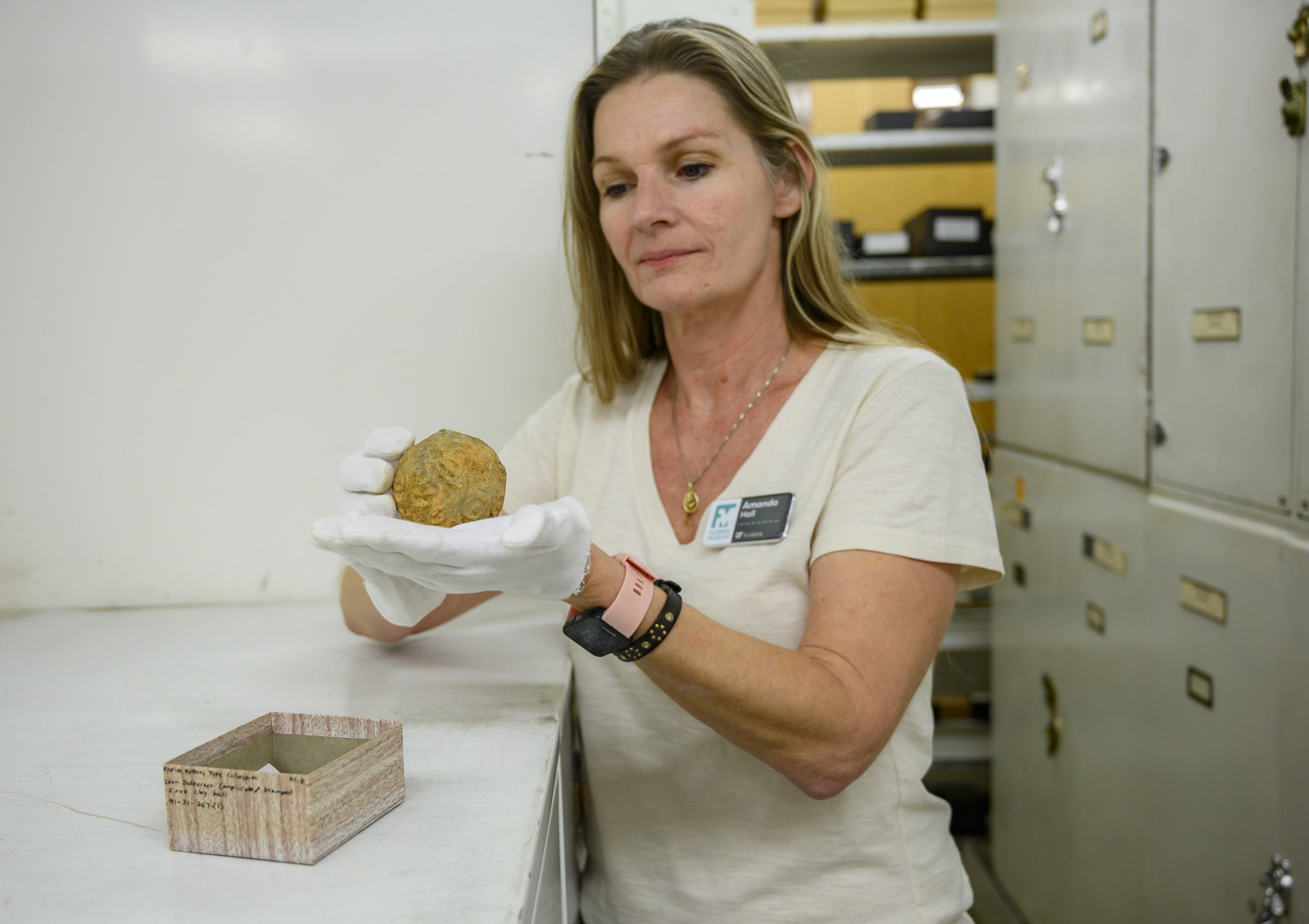Amanda Hall has had a lifelong passion for history. As a child, she spent countless hours in museums admiring exhibits depicting human history, while her older brother obsessed over dinosaur fossils.
“I would spend a lot of time in the Native American wing, and that really began my fascination with archaeology. I don’t know how to explain it, but it was always just something that felt special,” she said.
Hall officially joined the Florida Museum of Natural History as its new collection manager for Florida and Caribbean archaeology and bioarchaeology this January, bringing with her several years of expertise.
She took time to raise a family before pursuing a career as an archaeologist. But when her daughter had grown, the insistent tug became too strong to resist. She enrolled as a bachelor student at the University of North Florida with a major in archaeology and a minor in history.
Once she’d started, there was no question of turning back. After graduating, she transitioned to a master’s program at UNF, for which she decided to focus on the history of Yamasee Indians. She was specifically interested in their interactions and shifts of alliances between the Spanish in Florida and the English in South Carolina, and their role in the Yamasee War of 1715, one of the most important yet little studied events in American History.
Hall used artifacts and historical documents during her research, which created a window to the past. “It put names to people,” Hall said. “Rather than just saying the chief of a certain town, we knew who the chiefs were.”
Her connection extended to the present as well. Hall and her advisor visited the modern descendants of the Yamasees she was learning about. They participated in powwows and gleaned an understanding of Yamasee culture that couldn’t be academically translated through text. The experience further goaded her desire to trace the region’s troubled roots and discover how they’d grown into their current configurations.
Following her master’s degree, she was accepted to a doctoral program in anthropology at the University of Florida, where what began as a side project took on the dimensions of a detective story, complete with clues, false leads, dead ends and unanswered questions.
The mystery centered on fired ceramic spheres referred to as Lamar clay balls. The spheres are roughly the size of a softball, and some display a stamped decoration with an overlapping pattern of concentric circles, as though fat raindrops had fallen in a pond, and the ripples they made moved through each other. The Lamar balls were first documented in the early 1950s, when archaeologists stumbled across them while excavating an old Spanish mission near Tallahassee. By the time Hall became interested in them, dozens more had been found In the Tallahassee region, but still, no one knew who had made them or what purpose they served.

Florida Museum photo by Kristen Grace
“They were mentioned in publications, but as to what they were used for, nobody had a clue,” Hall said. Many of the Lamar balls had been quickly recovered from construction sites before the area was demolished and paved. In their effort to save everything they could, harried archaeologists often prioritized the quantity of recovered material over the quality of their field notes. It’s unclear where many of the specimens originally came from, much less how old they are.
“There was really nothing I could say about them, except what they looked like and that they were fired clay.”
Then she had an unexpected break. By chance, she heard of an archaeologist who’d found some of the same spheres in Southwest Georgia.
These Lamar balls didn’t provide much insight into what they’d been made for, but their presence north of Tallahassee indicated they’d been a popular commodity. “They’re fairly standardized in size and weight,” Hall said, adding that though the pattern on the spheres’ surface varies slightly from one region to the next, they have remarkably similar designs.
She looked closely at which patterns popped up where and analyzed their composition, from which she hoped to determine whether the balls were similar through space and time and gather clues about their purpose. Based on her findings, Hall suspects the Lamar balls were created by a group of people who initially lived in Georgia before the arrival of Europeans and later moved into Florida during the time of Spanish occupation.
At the Florida Museum, Hall plans to remove some of the roadblocks that made finding the right material for her doctoral research so difficult. Information about archaeological collections is often siloed in individual museum databases. For anyone attempting to do a comparative study of items in different collections, a significant portion of the work involved is spent figuring out what artifacts exist and where they’re located. With a combined, online database, problems like the one she faced with the Lamar clay balls in Florida and Georgia would be a thing of the past.
“These materials help define who we and other people are,” she said. “I’d like to show people what we have and make our collection digitally accessible to anyone interested in human history.”
Source: Amanda Hall, ahall@floridamuseum.ufl.edu
Media contact: Jerald Pinson, jpinson@floridamuseum.ufl.edu, 352-294-0452